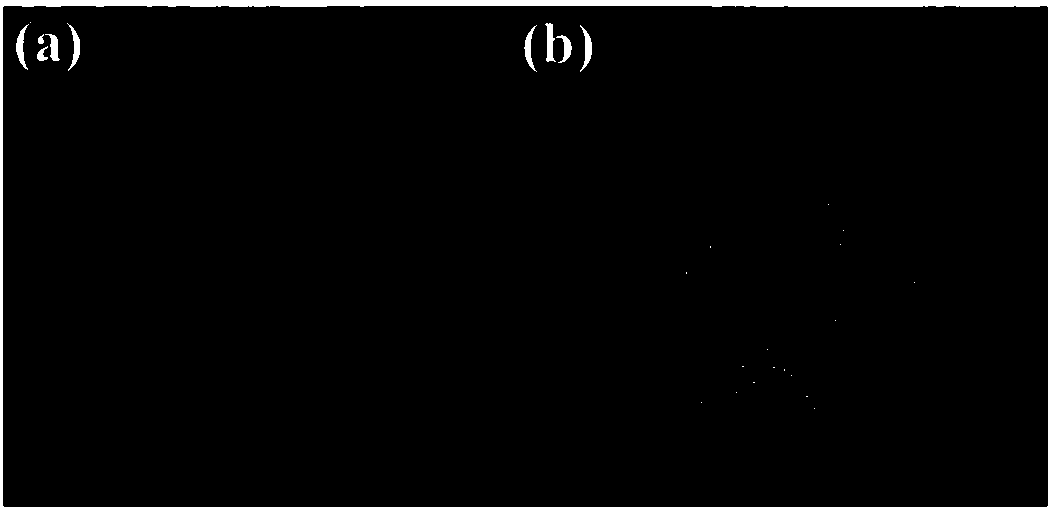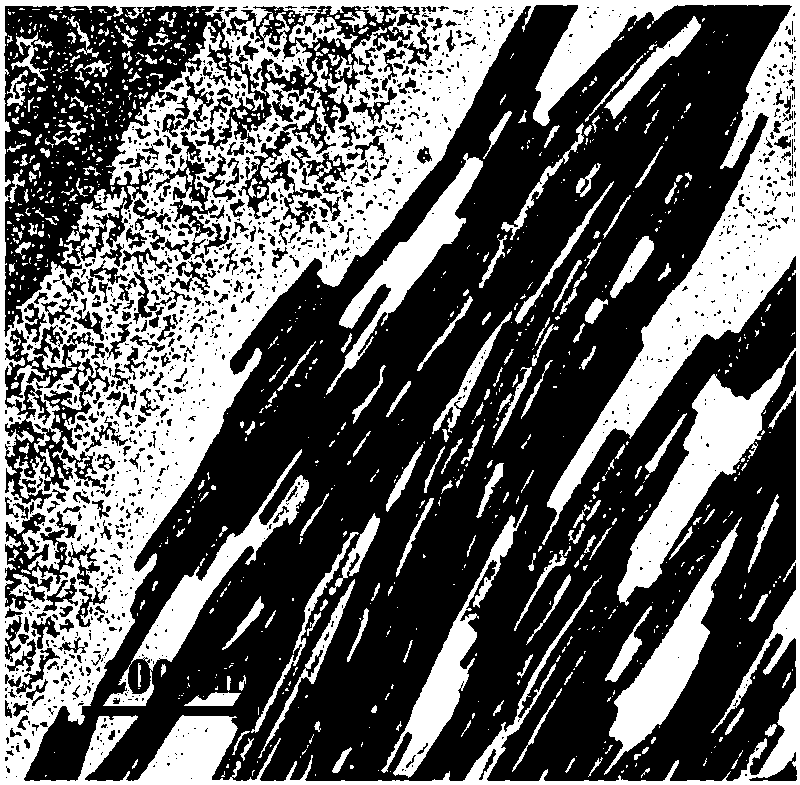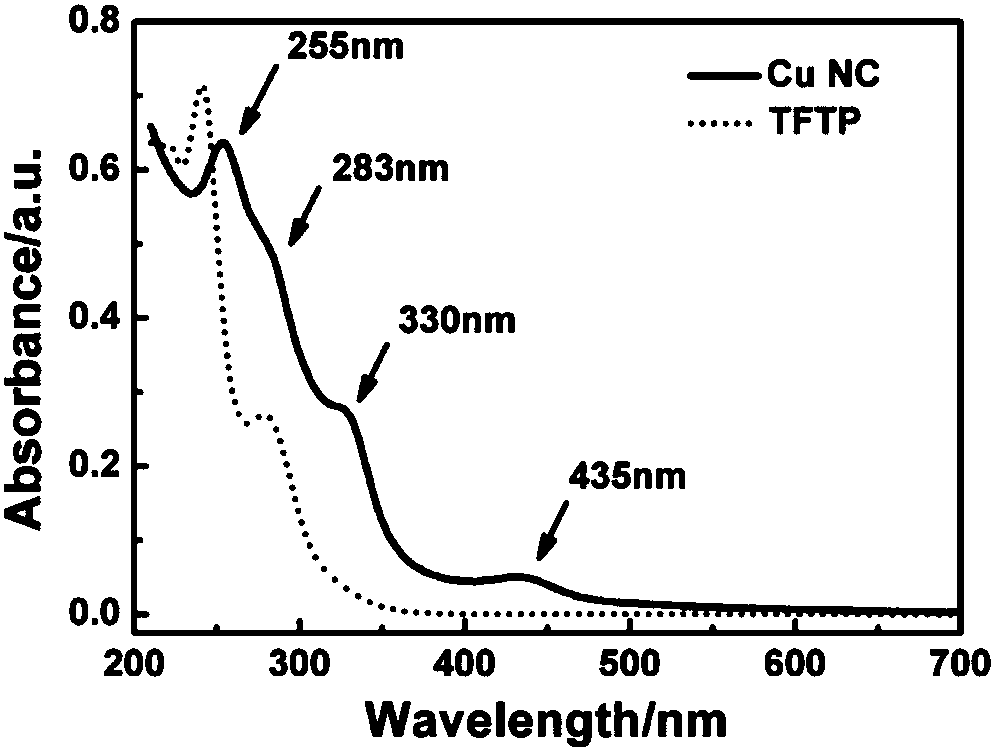Preparation method and application of copper nanocluster self-assembly
A self-assembly and copper nanotechnology, applied in nanotechnology, nanotechnology, nano-optics, etc., can solve the problems of cumbersome processing and achieve the effects of strong fluorescence stability, low detection limit, and rapid preparation
- Summary
- Abstract
- Description
- Claims
- Application Information
AI Technical Summary
Problems solved by technology
Method used
Image
Examples
Embodiment 1
[0034] Preparation steps of ribbon-shaped copper nanocluster self-assembly: Weigh 12 mg of copper nitrate and dissolve it in 5 mL of ethanol, add 0.15 mmol of 2,3,5,6-tetrafluorothiophenol, and stir at 25 °C for 1 h; then Centrifuge, remove the supernatant, and keep the precipitate; then the precipitate is centrifuged and washed three times with ethanol, and dried with nitrogen to obtain a light yellow powder, which emits orange fluorescence under the irradiation of a 365nm ultraviolet lamp (see figure 1 ).
Embodiment 2
[0036] Morphological characterization steps of copper nanocluster self-assembly: disperse copper nanocluster self-assembly powder in ethanol solution, take 2 μL and drop it on copper grid covered with ultra-thin carbon film, and make transmission electron microscope sample after natural drying , put the sample holder in the lens barrel of a JEM-1011 transmission electron microscope, and observe its morphology at a suitable magnification. Depend on figure 2 It can be seen that the copper nanoclusters self-assembled during the synthesis process and formed a ribbon structure after self-assembly.
Embodiment 3
[0038] The UV-visible absorption spectrum characterization steps of the copper nanocluster self-assembly: disperse the copper nanocluster self-assembly powder in the ethanol solution, and measure its UV-visible absorption spectrum with a UV-visible spectrophotometer, as shown in image 3 As shown, its ultraviolet-visible spectrum has four characteristic absorption peaks at 255nm, 283nm, 330nm and 435nm, wherein the absorption peaks at 255nm and 283nm correspond to the ligand 2,3,5,6-tetrafluorothiophenol (TFTP) Ultraviolet characteristic absorption, the characteristic absorption peaks at 330nm and 435nm are the characteristic absorption of 2,3,5,6-tetrafluorothiophenol-copper nanoclusters.
PUM
 Login to View More
Login to View More Abstract
Description
Claims
Application Information
 Login to View More
Login to View More - R&D
- Intellectual Property
- Life Sciences
- Materials
- Tech Scout
- Unparalleled Data Quality
- Higher Quality Content
- 60% Fewer Hallucinations
Browse by: Latest US Patents, China's latest patents, Technical Efficacy Thesaurus, Application Domain, Technology Topic, Popular Technical Reports.
© 2025 PatSnap. All rights reserved.Legal|Privacy policy|Modern Slavery Act Transparency Statement|Sitemap|About US| Contact US: help@patsnap.com



